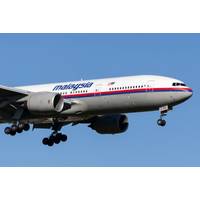
Can Underwater Sound Signals Solve Aviation’s Greatest Mystery?
;s (CTBTO) hydroacoustic stations. We focused on data from stations at Cape Leeuwin in Western Australia and Diego Garcia, an island in the Indian Ocean.Both locations were operational around the time MH370 is believed to have crashed. These stations are located within tens of minutes’ signal travel time from the seventh arc. CTBTO stations have previously detected distinctive pressure signals from aircraft crashes, as well as earthquakes of various sizes at distances of more than 5,000 kilometres away.The mode of impact dictates the signal’s properties such as duration, frequency range
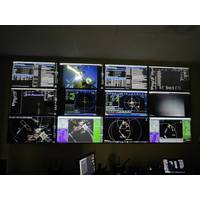
C-Innovation Brings Remote Survey Service to Gulf of Mexico
C-Survey (C-S) division, brought its remote survey operations to the Gulf of Mexico for the first time, after two years of successful operation in Guyana.According to C-Innovation, remote surveys enable C-S to be fully operational 24/7 without personnel being onboard a vessel, eliminating associated travel time and expenses, offshore health and safety exposure, and the need for COVID-19 related measures.Credit: C-Innovation"After two years of successful operations in Guyana, C-S has now successfully completed its first biological marine growth survey in the Gulf of Mexico. The personnel was stationed
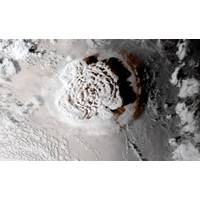
Tsunami Models Underestimated Shockwave from Tonga Eruption
at more than 300 meters per second and was so powerful, scientists said, that it caused the atmosphere to ring like a bell.Through the transfer of this energy from the atmosphere to the ocean, the shockwave amplified ocean waves around the world, pushing them farther afield and accelerating their travel time - something tsunami warning centers weren't equipped to handle.Now, Fritz said, the possibility of atmospheric pressure waves needs to "be added to tsunami warning centers' suite of modeling and forecasting tools."(Reuters - Reporting by Gloria Dickie; Editing by Katy Daigle
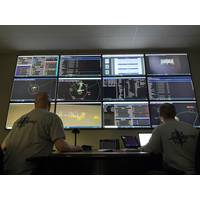
C-Innovation Wraps Guyana Survey Remotely from U.S. HQ
.Remote survey operations are based in C-I’s headquarters in Mandeville, Louisiana, U.S., and conducted by C-Survey (C-S), an internal division of C-I. "This type of survey services enables C-S to be fully operational 24/7 without personnel being onboard the vessel, eliminating associated travel time and expenses, offshore health and safety exposure, and the need for COVID-19 related quarantines," C-I said.Tim Bingham, survey manager, C-I, said, “We are very excited to begin offering remote survey services to our clients and look forward to the continued growth of remote survey
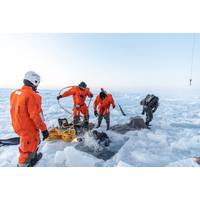
The Value of Friends in “High-Latitude” Places
were found that had the unique capabilities required to recover the moorings. There were no viable options in the U.S. for the remainder of 2020. The project would be set back by at least a year and millions of dollars if the moorings were not recovered. The success of the CAATEX acoustic travel time measurements (and subsequent determination of Arctic heat content) depended heavily on recovering the moorings on both sides of the Arctic Ocean. Furthermore, the moorings had to be recovered while their on-board atomic clocks were still running. If the moorings were not recovered in the
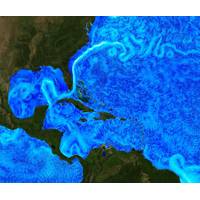
Researchers to Monitor Disruptive US Gulf Current
;s deep waters.PIES work by transmitting an acoustic pulse from an instrument on the seabed upwards. The pulse is reflected off the water-air boundary at the sea surface and returns back down to the seabed where it is detected by the PIES. This enables an exact measurement of the two way signal travel time to be calculated. At the same instant, an accurate measurement of depth is made using highly precise internal pressure sensors. Combining data from an array of PIES instruments and near bottom current meters with historic water profile data can be used to calculate currents throughout the full
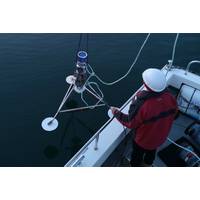
Enhanced Seismic Monitoring at Johan Sverdrup
conditions are known, their impact can be readily removed.To solve this challenge, Equinor has engaged subsea services contractor Subsea 7 to install a Sonardyne Pressure Inverted Echo Sounder (PIES) at 110 - 120 meter water depth at Johan Sverdrup. PIES instruments continuously measure the two-way travel time of sound waves propagated through the water column from the seabed to the sea surface as well as the pressure (depth) at the seabed. This data is then used to calculate a continuous time history of average water velocity and tidal variation throughout the whole water column.While PIES instruments
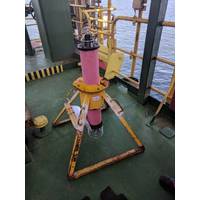
IUEM Chooses iXblue Equipment
project, iXblue was chosen to provide autonomous and continuous monitoring of the movements of the tectonic plates along a 2 kilometers segment of the North-South Alfeo faults. Installed on the seafloor along the faults, the transponders will measure, over the course of four years, the acoustic distance travel-time from one transponder to another to precisely determine their accurate distance.“Thanks to those measurements, the IUEM will then be able to better characterize the way the fault behaves and will gain valuable insight into seismic risks.”Enhancing iXblue’s offer in subsea positioning

New Personal Submarines Unveiled
to traditional submersibles using lead-acid. The technology has been tested to 4,000 meters and stores a total of 62 kWh in compact battery modules. The abundance of power makes it possible to apply more and stronger electrical thrusters, extend mission time, install additional lights and halve travel time between the surface and the ocean floor. The C-Researcher design also incorporates U-Boat Worx’ characteristic unimpeded view for its occupants. This has been achieved by placing the acrylic sphere at the front of the submersible and the automatic trim weight system.

 December 2025
December 2025





